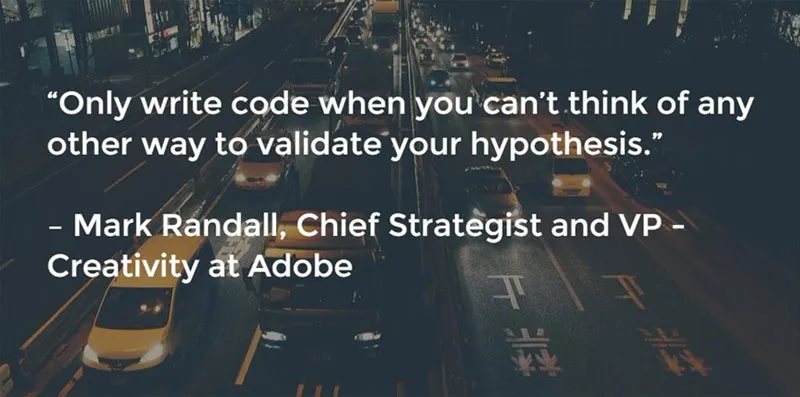Startups should not waste time and resources while building their MVP
Minimum Viable Product, or MVP, is sure to show up prominently in any startup glossary. And like most other jargon, it is often misunderstood.

But before we get into that, let's come up to speed on the popular notion of the MVP.
An MVP, or Minimum Viable Product, is the most basic version of your product that still delivers your core offering. Before investing huge amount of time and money, a bare bones version is built in order to get the validation. The product at this stage would be ‘minimum’ in that sense, but would still need to be viable, providing the solution it was created for.
Aiming for an MVP helps entrepreneurs avoid the rookie mistake of spending too much resources to build a product before validating the market need. While startups may want all the ten revolutionary features in their first version, developing them would take, on average, five extra months, and, chances are, users may not even end up using some of them.
While the idea behind MVP may sound simple enough, startups often make the mistake of spending too long on developing them. I built my first prototype in three months, but could not see it through because users did not need it. My second attempt took four months for building and three for testing.
When I took a step back recently, I realised that spending four months on building the MVP is far too excessive. We had done all the right things: cut the feature bloat, honed in on the two key functionalities, and built them. But that's how long it took. I couldn’t imagine having finished it under three months.
From talking to other entrepreneurs, I see they are faced with the conundrum that has become common to all of us: Why does building the MVP take so long?
The reason may be that we have got the notion all wrong: for all but the most tech-intensive products, one doesn’t so much have to ‘build’ an MVP as to ‘put it together’. And this often doesn't need much coding at all.

Let's say you are starting a website that offers personalised fashion tips. You can launch the site in a day or less, without having to wait for the complete website to be up and running. Here are some steps that may help you do that, within a practical timeframe to achieve the tasks:
- Buy a domain (3 hours)
- Build a one-page website with LeadPages, where people can upload photos or ask questions . There is little need, at this stage, to create an account or browse any content . Users can can ask fashion-related questions, and you can email your replies. (1 hour)
- What could be a simpler and quicker first step would be to use WhatsApp for people to send in their pictures or questions to. (1 hour)
- Run a small Facebook campaign publicising the site/phone number. Reach out to ten friends, and have them each tell ten more. That's your test audience. (2 hours)
If you are still worried about not spending enough time on your MVP, below are some of the companies that built on their MVP as they expanded:
A. Started with an incomplete product
- Zappos is a US e-retailer specialising in shoes. At the conception, the founders visited a few shoe stores, took photos of their merchandise, and put them on their website. When customers purchased the shoes, they would buy them from the stores and ship them.
- Flipkart, too, had similar beginnings. They went out and bought books themselves and when they received the orders, shipped them out to customers.
Back then, these companies had to build their e-commerce website. Today, with Shopify, even that can be done in no time.
B. Started by combining existing products

- Angellist is a LinkedIn for startups - a marketplace that connects startups and investors. Their MVP was good ol’ email to connect a startup looking for funding with an investor.
- Amazing Airfare helps one find bargains on airfare. The company put together its MVP with text messages, PayPal, Excel, and email, and zero coding.
C. Started without a product (!)

- DropBox started as a video, with just a clip of the founder shifting files between folders. Interested people could sign up for updates, and when they did, validation came about. There was no MVP, but this stands as a great example of how to validate your product without a single line of code.
- Kickstarter campaigns follow the same strategy, wherein a startup puts up an interesting product idea before building it. Others would demonstrate their desire by extending support. With validation, the startup can go ahead and build the product then.
This list can go on but I will conclude with an anecdote: a friend told me last week that he had a great business idea. He'd planned it in detail - he already knew the 12th feature he'd introduce in Month 22. But he hadn't launched yet – it all seemed too daunting , he said. So this is what we did - we took one of these to-do books, and made a list of starting tasks. It wasn't that long - only three items, one of which was finding a name - which he had already had, so we ticked this with a glorious flourish. Sometimes all it takes is writing down a list and ticking off the first task on it to get us started on something exciting.
I hope to build many MVPs over my career, so any lessons from your experience would be quite handy. Comment here or tweet at @jithamithra.







